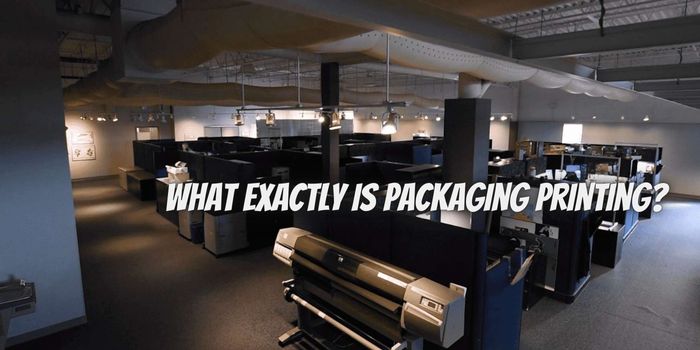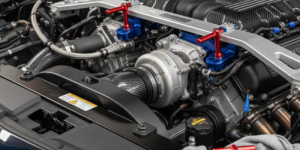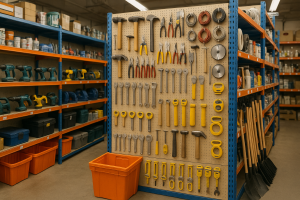What Exactly is Packaging Printing?
Packaging printing is a multifaceted process that goes beyond merely enclosing products. It involves the art and science of applying graphics, text, and images onto packaging materials to create visually appealing, informative, and functional packaging solutions. In today’s consumer-centric world, the packaging is more than just a protective covering; it’s a powerful marketing tool that conveys brand identity, product information, and quality to consumers. We will delve into the intricate world of packaging printing, shedding light on its processes, significance, and the technology steering its evolution.
The Significance of Packaging Printing
Packaging printing functions as a critical conduit between products and consumers, bridging the gap between what’s inside the package and the shopper’s anticipations. Its significance extends far beyond aesthetics; it fulfills several crucial functions:
- Brand Identity: Packaging design often forms the basis of brand recognition. The carefully selected colors, distinctive logos, and unique design elements contribute to the identity of a product and its maker.
- Product Information: Packaging functions as a paramount source of information for consumers. It conveys vital details such as ingredients, usage instructions, nutritional facts, and safety warnings, allowing consumers to make knowledgeable decisions.
- Marketing and Communication: Packaging is an influential marketing tool. Its design communicates a product’s attributes, usefulness, and features, seizing consumer interest and encouraging engagement.
- Differentiation: In an increasingly competitive market, packaging plays a pivotal role in distinguishing one product from another. An innovative and captivating design can help products stand out on the store shelf and in the digital marketplace.
- Protection and Preservation: Beyond its aesthetic and communicative functions, the packaging is conceived to safeguard products from damage, contamination, and environmental elements during transportation, storage, and handling.
Processes Involved in Packaging Printing
- Packaging printing: Involves a sequence of intricately connected processes that culminate in creating appealing and functional packaging. These processes work harmoniously to transform raw materials into packaging that captures attention and delivers information:
- Prepress Preparation: Before the printing presses start rolling, skilled designers meticulously craft digital artwork using specialized software. This artwork encompasses graphics, images, logos, and text. The prepress phase ensures that the design is meticulously formatted for flawless printing.
- Plate Making: In traditional printing methods like offset printing, digital designs are transposed onto plates. Each color within the design necessitates a separate container. These plates then serve as intermediaries, transferring ink onto the packaging material.
- Printing: The chosen printing method dictates transferring the ink from the plates to the packaging material. Different techniques, such as flexography, offset printing, digital printing, and gravure printing, propose varying levels of quality, efficiency, and suitability for other materials and applications.
- Color Management: Maintaining consistent and accurate colors across diverse printing runs is vital. Color management implicates precise calibration and adjustment to ensure the colors on the packaging match the intended design.
- Finishing and Coating: After the ink has been applied to the packaging material, completing processes like coating, laminating, embossing, or debossing are employed to sweeten the visual and tactile aspects.
- Die Cutting and Folding: In this phase, the printed material is meticulously cut and folded into the desired shape for the packaging. Die-cutting techniques enable intricate designs while folding turns flat sheets into three-dimensional packaging structures.
- Gluing and Assembly: When packaging mandates adhesive to preserve its intended shape, gluing, and assembly are carried out. This phase ensures that the packaging is sturdy and functional.
Challenges and Considerations
Packaging printing, while offering an array of benefits, comes with its own set of challenges:
- Regulations: Packaging must adhere to stringent regulations and guidelines about labeling, ingredients, and safety information. Non-compliance can result in legal issues.
- Color Consistency: Maintaining color consistency across different packaging materials and printing methods can be challenging due to variations in materials, printing equipment, and lighting conditions.
- Sustainability: As consumers demand environmentally friendly products, packaging printers must balance vibrant printing and sustainable practices, utilizing eco-friendly inks, materials, and processes.
- Security and Counterfeiting: The advancement of technology also brings about challenges related to security. Packaging must incorporate security features to safeguard against counterfeiting and protect brand integrity.
Packaging printing is a dynamic interplay of artistic flair, technological innovation, and functional necessity. It is pivotal in creating a bridge between products and consumers, capturing attention, conveying information, and fostering brand loyalty. Packaging printing is becoming increasingly adaptable, sustainable, and interactive as technology advances. Every aspect of packaging printing, from the choice of materials to the selection of printing methods, contributes to crafting a memorable and informative package that resonates with consumers. In a world where packaging is both a visual experience and a tactile encounter, packaging printing is critical to creating lasting impressions and shaping consumer decisions. A leading packaging printing company will combine cutting-edge technology, creative expertise, and a commitment to sustainability, proposing innovative solutions that captivate consumers and elevate brands to new heights.














Post Comment
You must be logged in to post a comment.